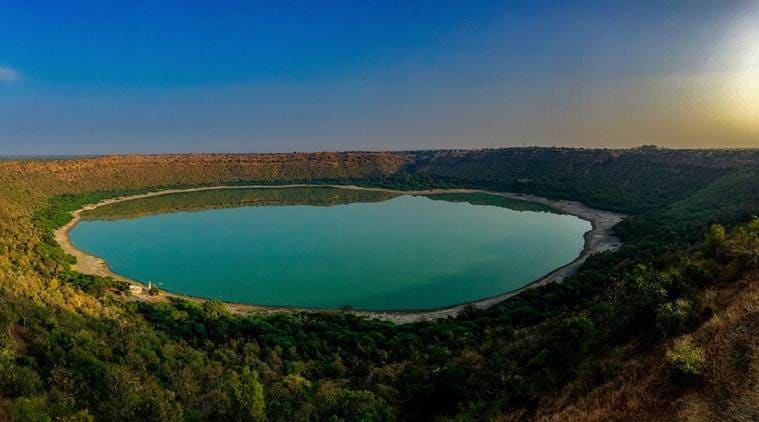Lonar lake turning reddish: Buldana collector asks NEERI to find out why
Lonar lake is a crater-lake at Lonar in Buldana and is part of the largest impact crater in the world, formed in basaltic rock with a diameter of 1.85 km and depth of 500 feet.
 Lonar lake is a crater-lake at Lonar in Buldana and is believed to have been created over 52,000 years ago. (Source: Wikimedia Commons)
Lonar lake is a crater-lake at Lonar in Buldana and is believed to have been created over 52,000 years ago. (Source: Wikimedia Commons)
Buldana Collector Suman Chandra has requested the National Environmental Engineering Research Institute (NEERI), Nagpur, to find out the reason behind the water in the Lonar lake in the district turning reddish over the past few days.
“Local officials have told me that usually the water in the lake does turn reddish in the monsoon but this time it appears to be more reddish. So, I have written to NEERI to let us know the reasons behind the phenomenon,” said Chandra
“It is generally attributed to algal bloom in the lake around this time of the year,” she said.
Lonar lake is a crater-lake at Lonar in Buldana and is part of the largest impact crater in the world, formed in basaltic rock with a diameter of 1.85 km and depth of 500 feet.
It has been a subject of curiosity and study for scientists from all over the world, and is believed to have been created over 52,000 years ago.
Some scientists, however, say it was formed over 5 lakh years ago.







